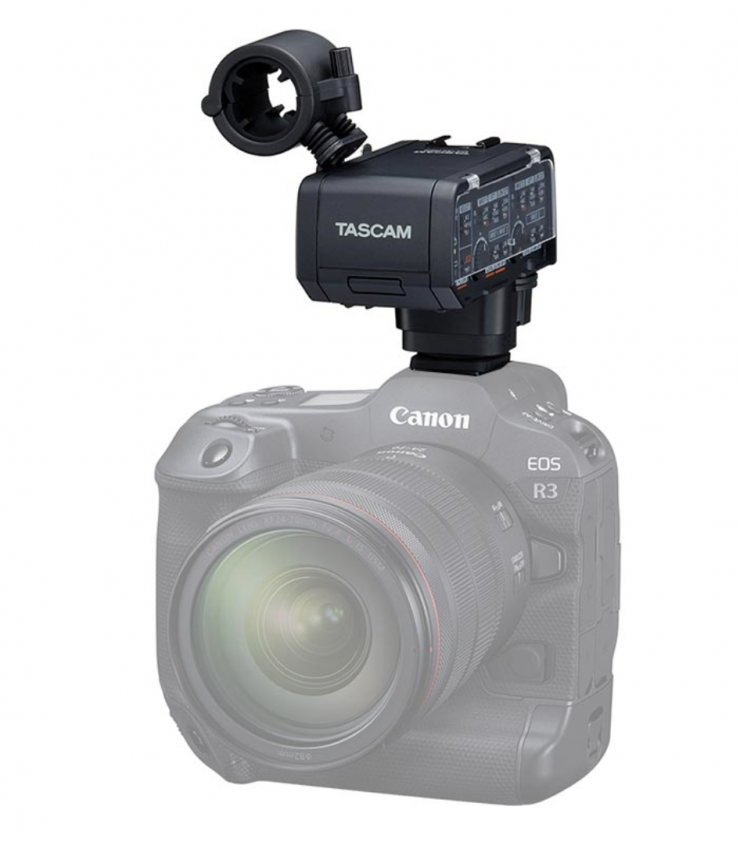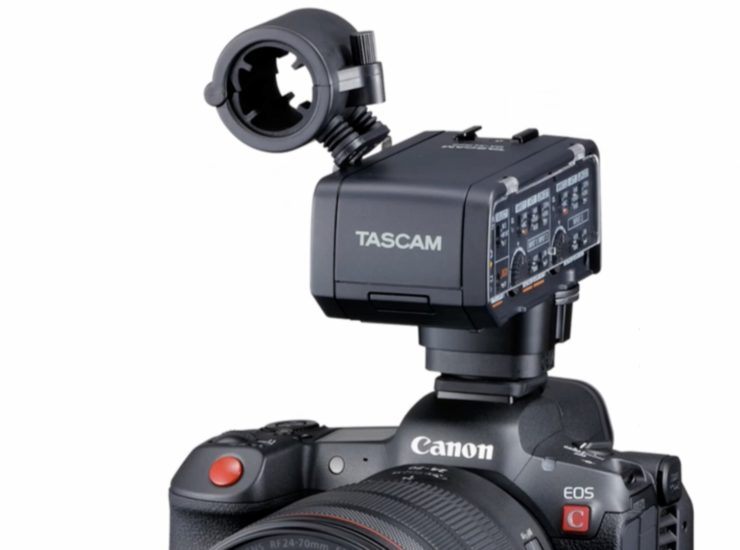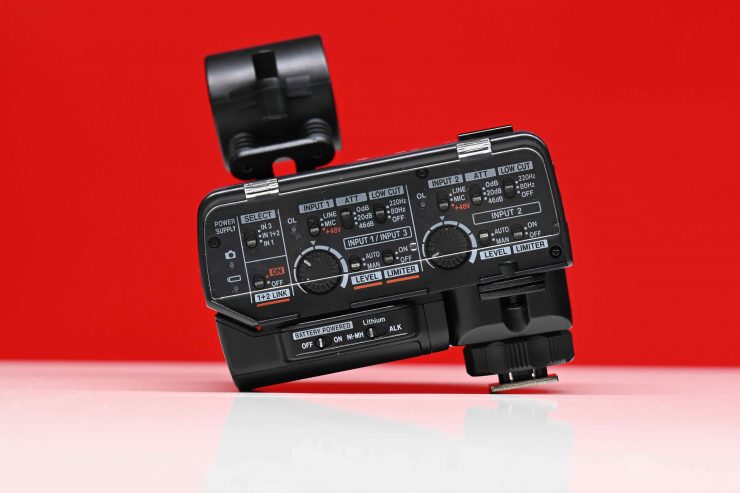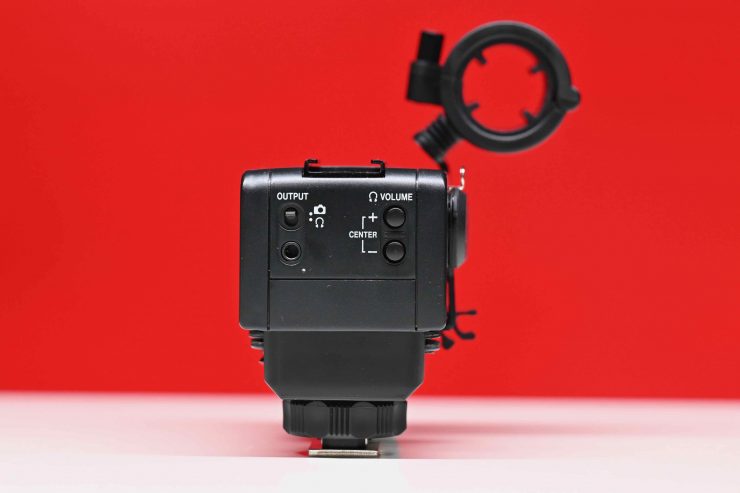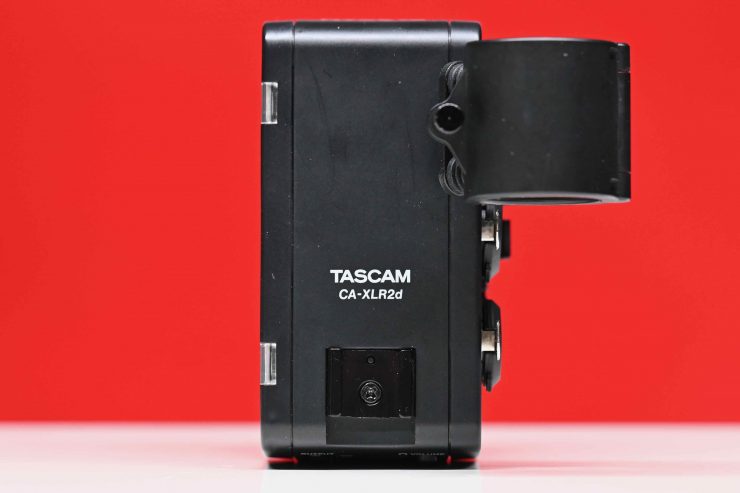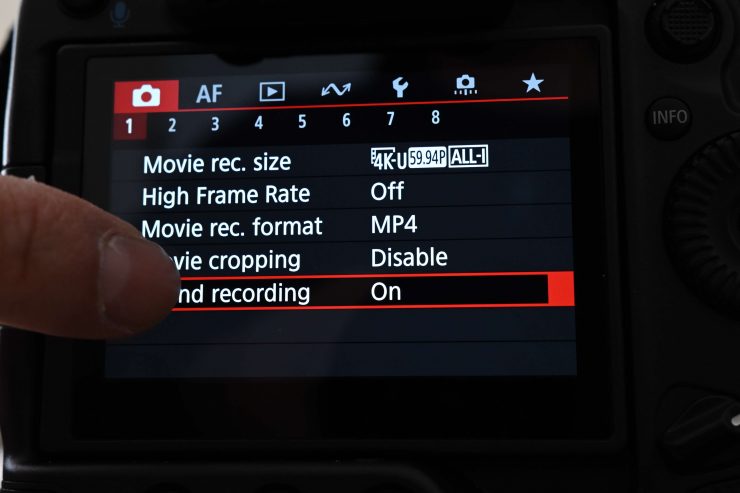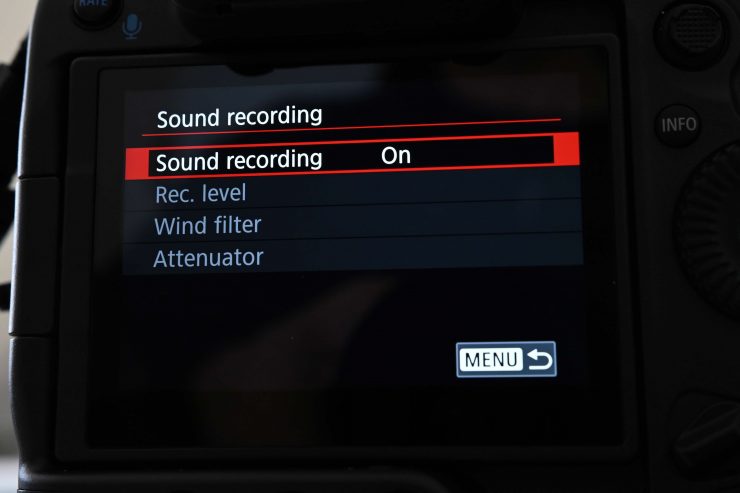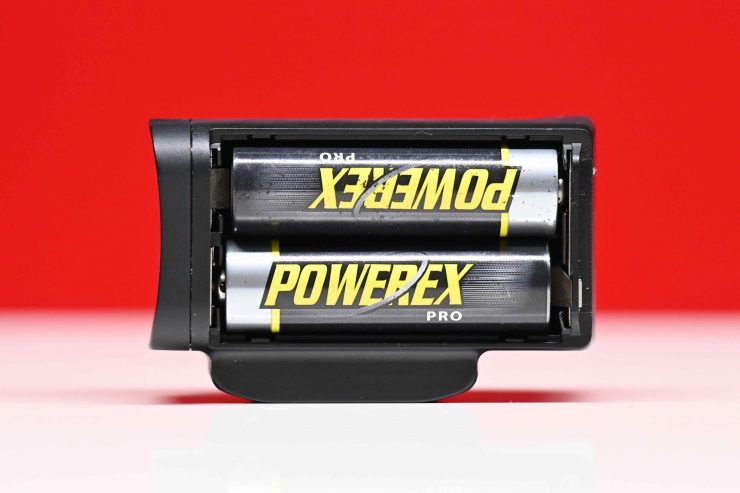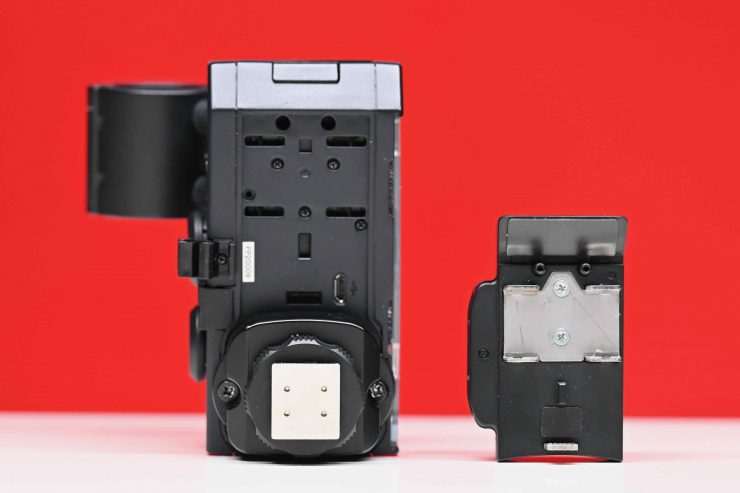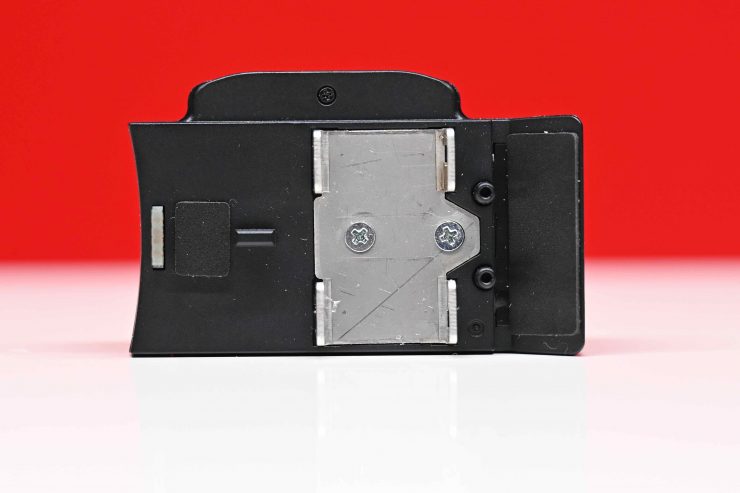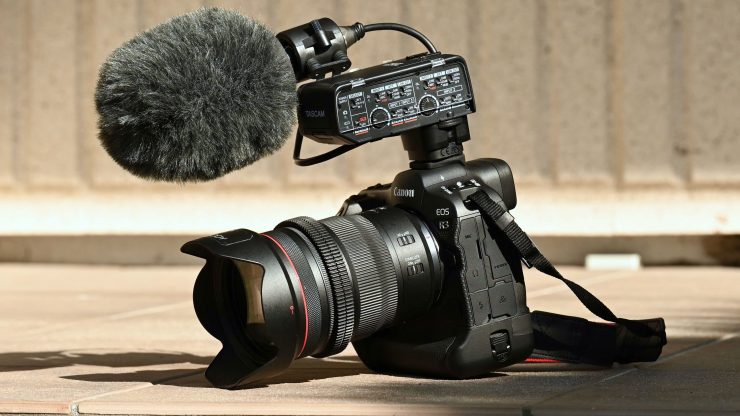
The Tascam CA-XLR2d-C is an accessory that a lot of EOS R3 and R5 C owners will be looking at, especially for those users who are shooting video.
Canon has been way behind the eight ball when it comes to audio solutions for its mirrorless hybrid cameras. While Sony and Panasonic have had hot shoe interface XLR adapter modules for years and years Canon has stuck with a 3.5mm mic input. Finally, Canon has teamed up with Tascam and the result of that collaboration is the CA-XLR2d-C.
The Tascam CA-XLR2d-C integrates directly with the new multi-function shoe on the R5 C, R3, and XF-605. This allows the camera to directly power the XLR module and to transfer the audio without any need for cables.
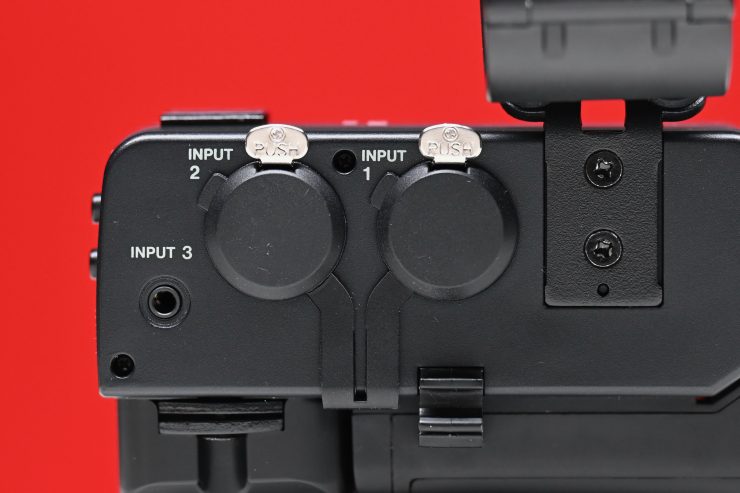
The CA-XLR2d-C features two XLR inputs and a 3.5mm mic input.
Now, you can’t use all three channels at once. You either have to select between using channels 1&2, channel 1 only, or channel 3 only.
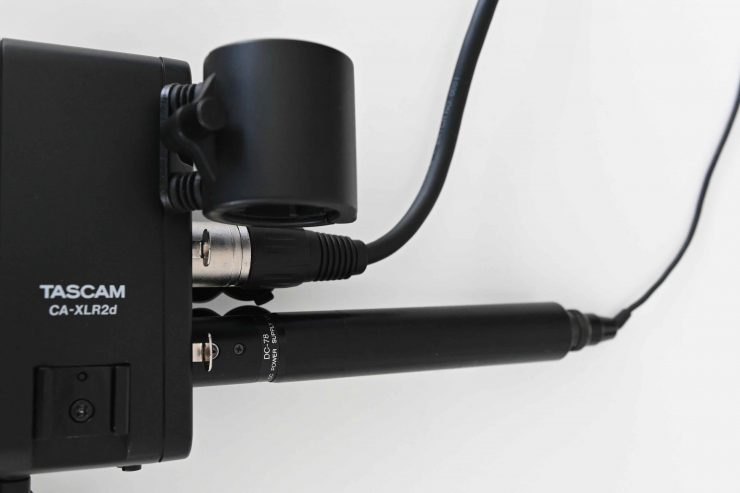
You can input line, mic, or +48V sources into both channels 1 and 2.
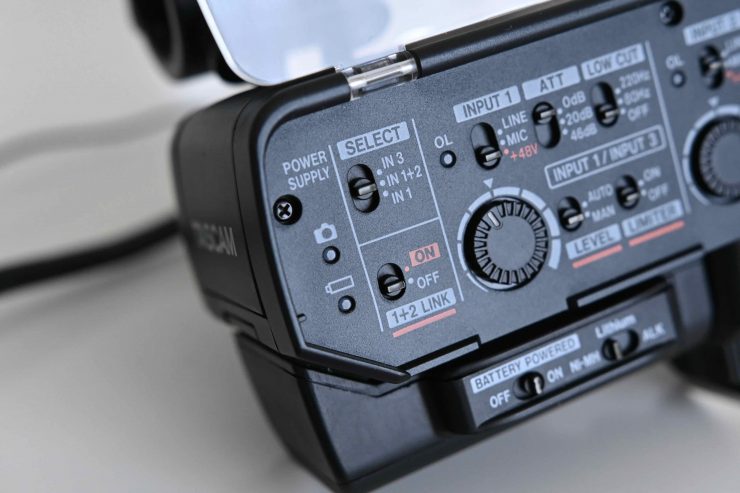
If you select In 1&2 you have full independent control over both channels.
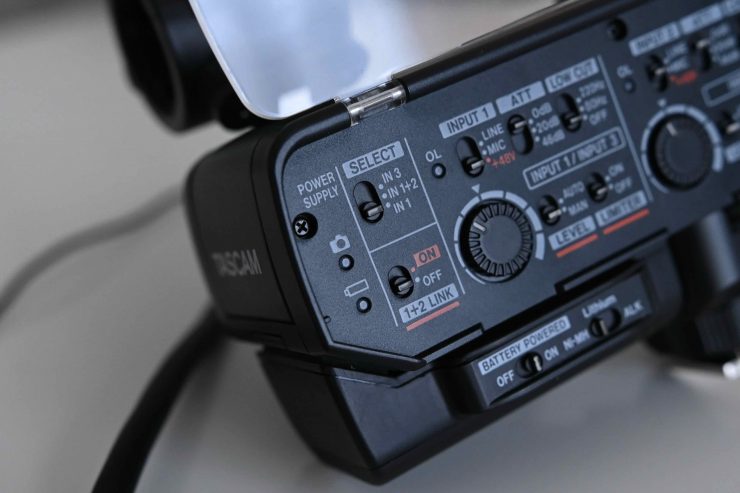
If you just select channel 1 you can have that input signal outputed so that you can record it at two separate levels to two tracks on your camera.
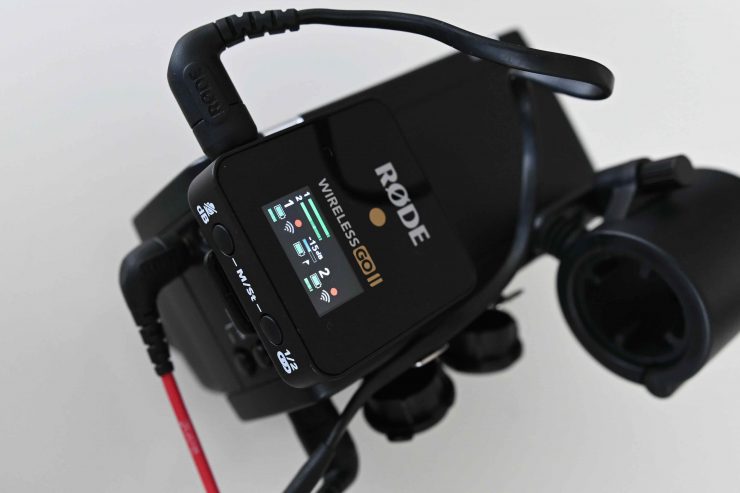
If you just select channel 3 and you are using a stereo mic or a dual-radio mic receiver then it will output two channels to your camera.
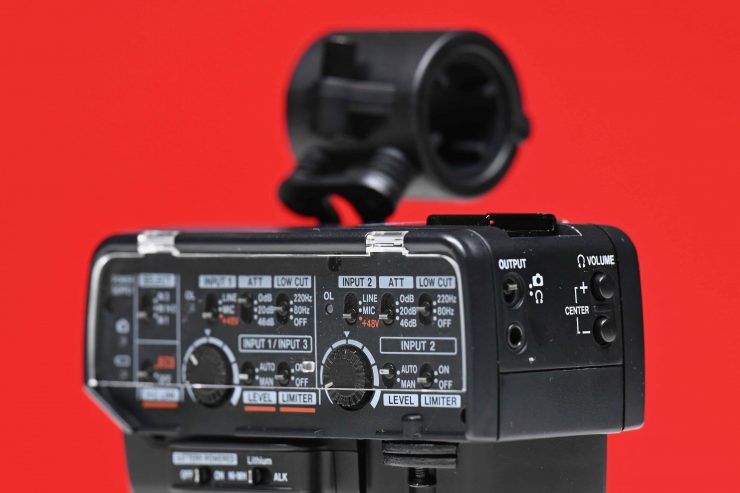
CA-XLR2d-C has settings for line and mic and the ability to provide phantom power.
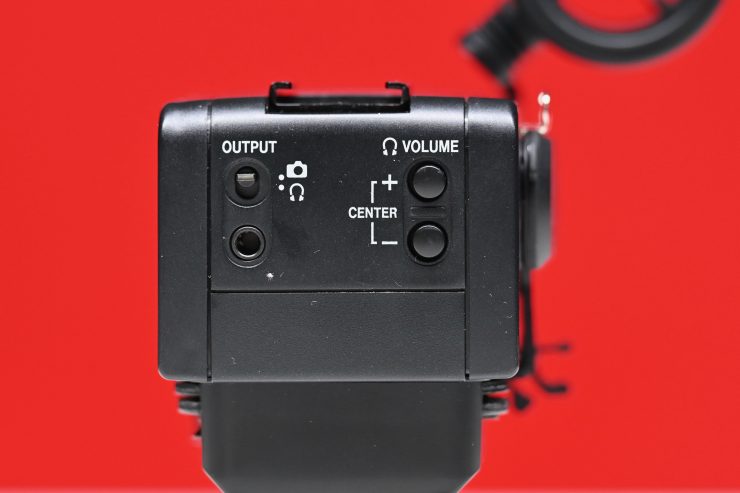
There is also a headphone out jack that can also be switched to a 3.5mm output if you wanted to use this adapter on another camera and not an R5 C or R3. You can adjust the headphone volume, but those controls don’t do anything when the output is set to camera.
You need to be aware that the CA-XLR2d-C doesn’t come with a microphone, so you will need to source one yourself.
Build Quality
The CA-XLR2d-C is very solidly made. It certainly doesn’t feel cheap or plasticky in any way. I was impressed with the overall build quality of the product.
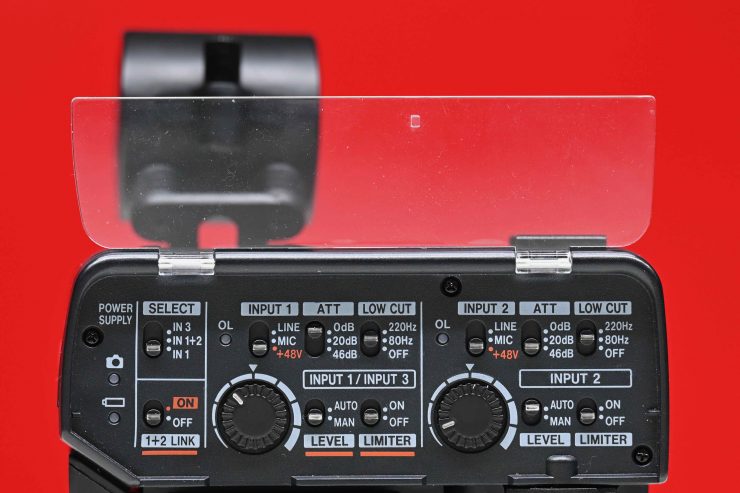
The plastic door that protects the dials and switches is well thought out. When you open the cover and lift it up it stays in place and doesn’t fall down.
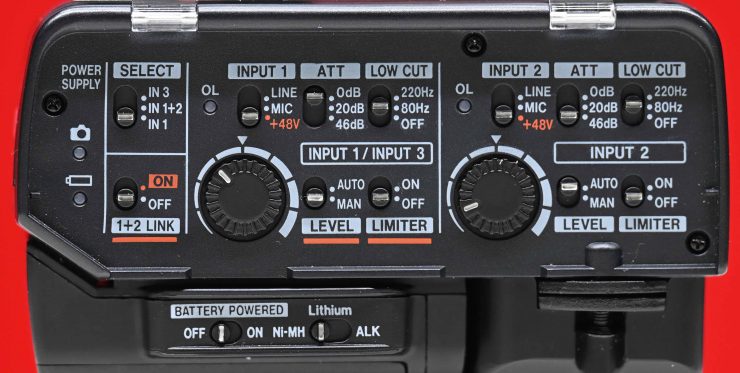
The switches feel tactile and solid, but I did find the Level dials a little bit too loose for my own liking. I want to make it crystal clear that they still work as advertised, I just would have preferred to have seen something that was a little more tactile.
Size & Weight
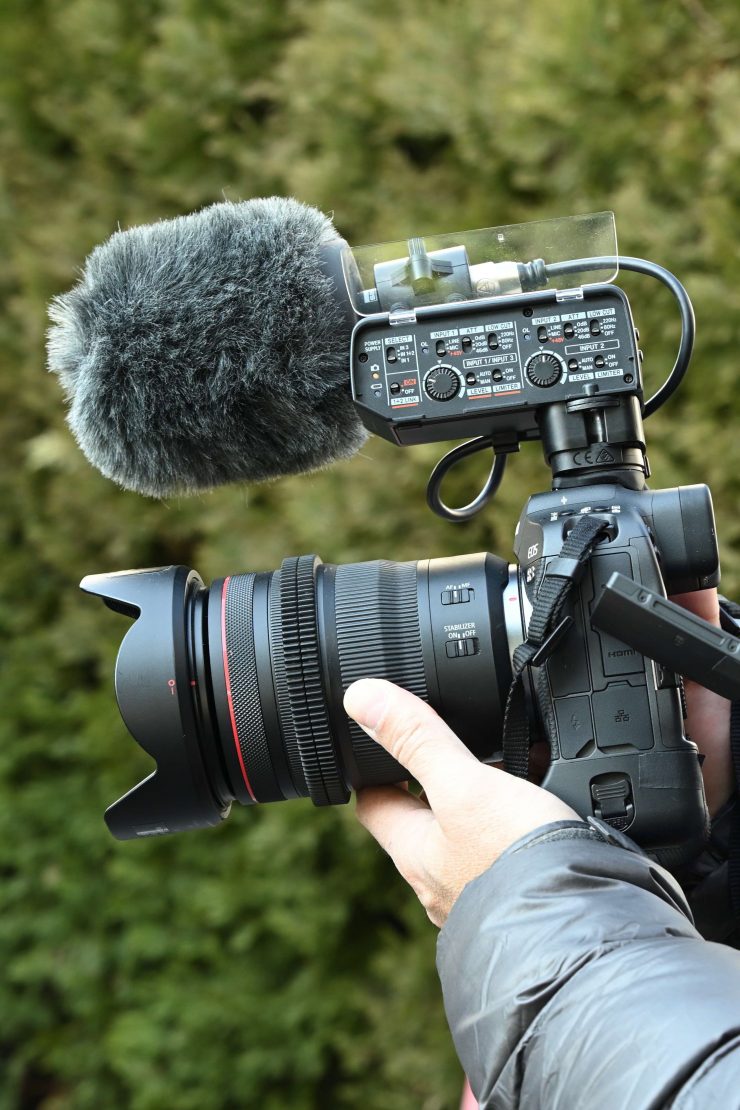
The CA-XLR2d-C feels heavier than I expected it to. It tips the scales at 12.6 oz / 357 g (with battery holder attached, not including batteries). Without the battery holder, I found that it weighed 11.46 oz / 325 g.
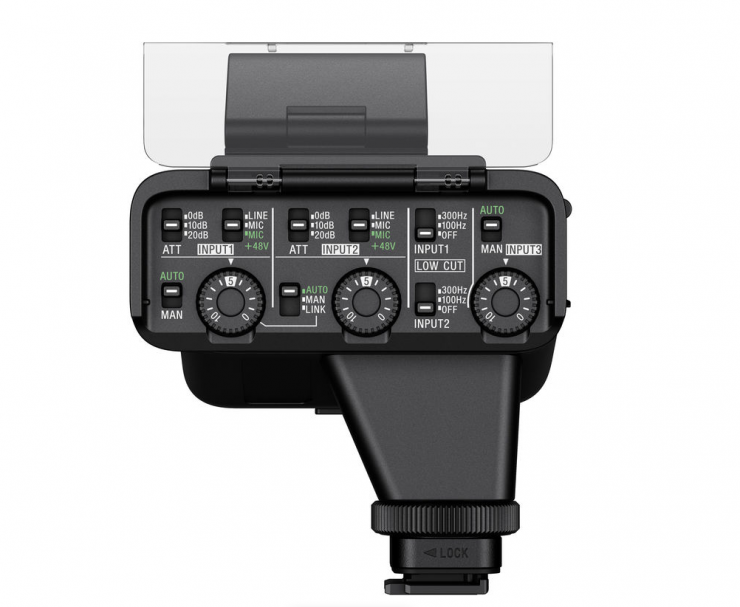
Sony XLR-K3M Dual-Channel Digital XLR Audio Adapter Kit with Shotgun Microphone 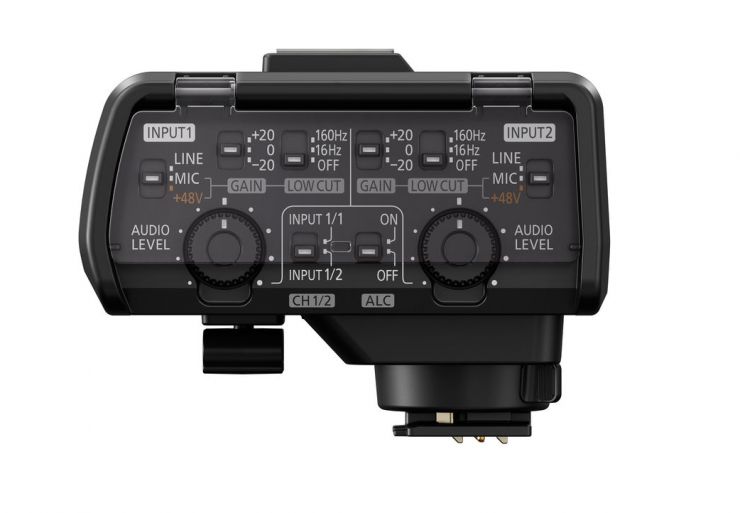
Panasonic DMW-XLR1 XLR Microphone Adapter
To put this weight in context here is a weight comparison between the Tascam CA-XLR2d-C and Sony and Panasonic’s solutions:
| WEIGHT | |
| Tascam CA-XLR2d-C | 11.46 oz / 325 g |
| Tascam CA-XLR2d-C (with battery holder) | 12.6 oz / 357 g |
| Sony XLR-K3M Dual-Channel Digital XLR Audio Adapter Kit with Shotgun Microphone | 6.6 oz / 187 g |
| Panasonic DMW-XLR1 XLR Microphone Adapter | 6.08 oz / 173 g |
Both Sony and Panasonic’s solutions are considerably smaller and lighter than the Tascam, however, both those products can only be used on Sony and Panasonic cameras respectively.
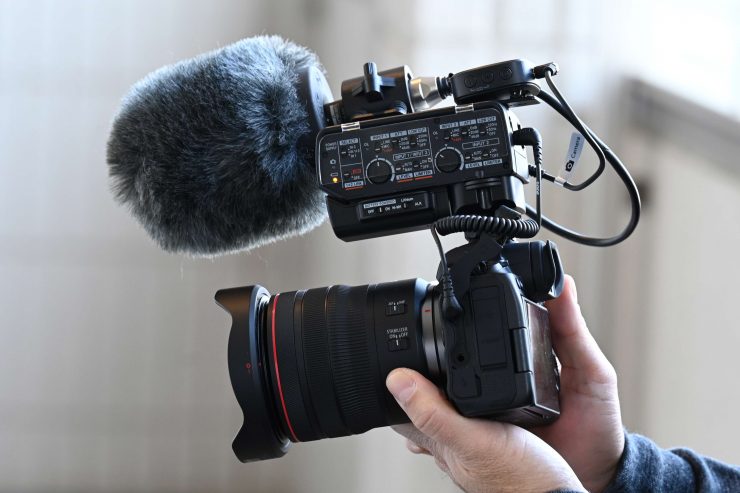
I think some Canon owners would have liked to have seen a smaller solution that was more in line with what Sony and Panasonic have done.
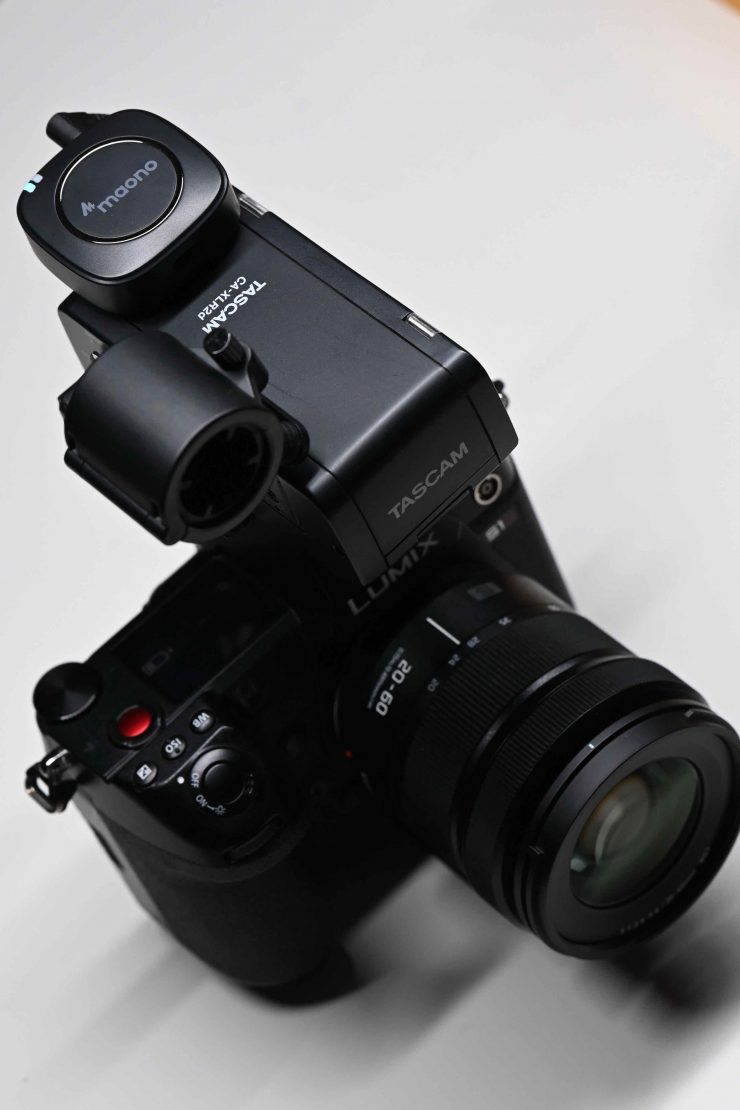
Even though the CA-XLR2d-C does take up a lot of real estate on top of your camera, its size does allow you to mount smaller-sized wireless microphone receivers or even a timecode device. This could perhaps mitigate the need for a camera cage for some users.
How firmly does it secure to the multi-function shoe?
The CA-XLR2d-C features a nice locking mechanism and it attaches securely to a canon camera that uses the multi-function shoe.
Microphone Mount
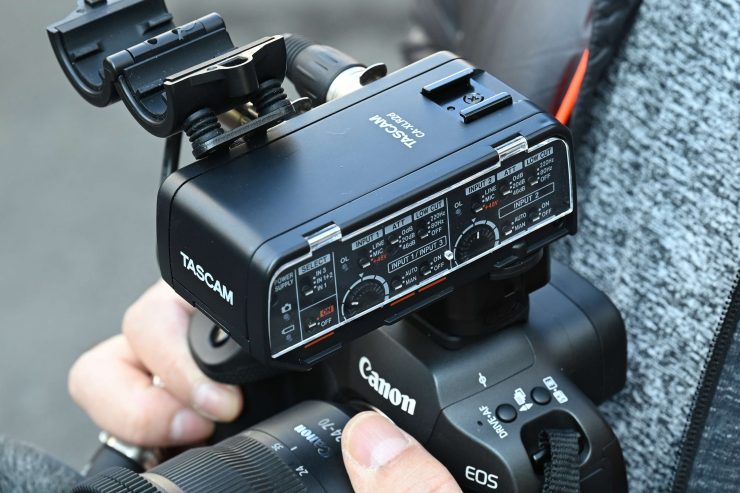
The included microphone mount is well made and it can also be removed from the CA-XLR2d-C if need be.
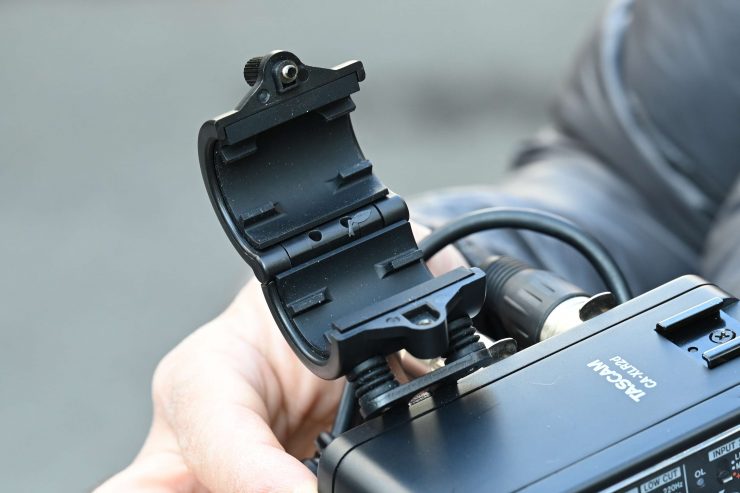
It will fit a variety of different types of shotgun microphones.
CA-XLR2d-C & Canon R3
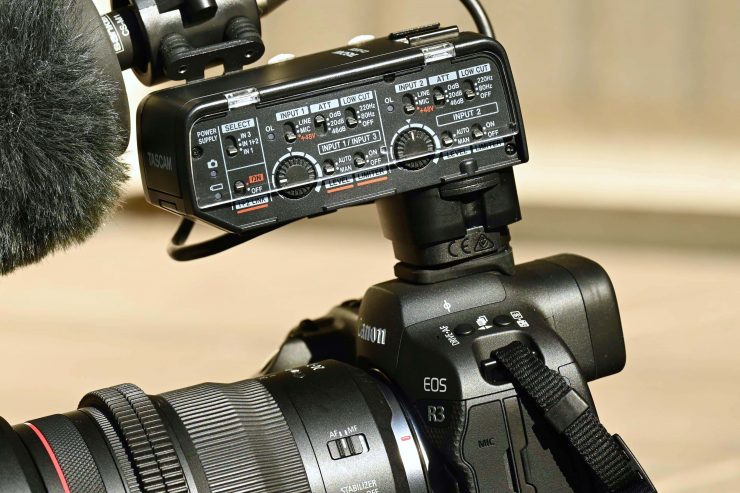
I didn’t have access to an R5 C at the time of this review so I had to try the CA-XLR2d-C with the Canon R3.
On the Canon R3 once you attach the CA-XLR2d-C you lose the ability to record audio through the 3.5mm input.
On the R3 there is also no way of setting the levels for audio. Everything has to be done through the CA-XLR2d-C.
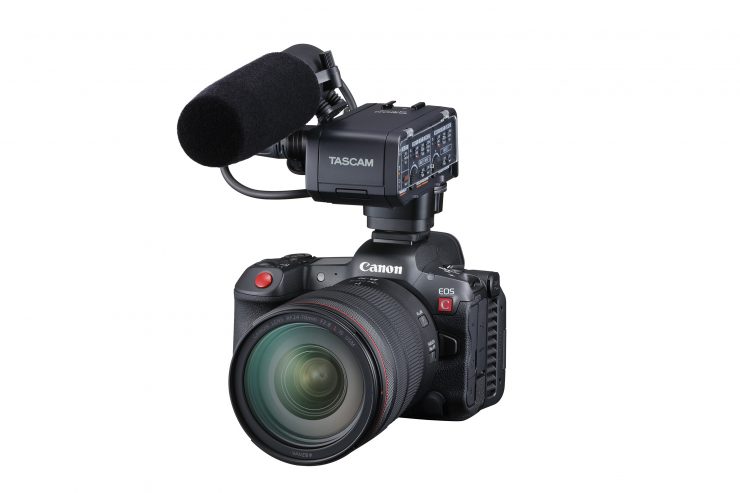
If you happen to be using the R5 C with the CA-XLR2d-C you can also utilize the 3.5mm mic input at the same time which will give you the ability to record up to four channels of audio.
CA-XLR2d-C and Multi-Function Shoe Audio Quality
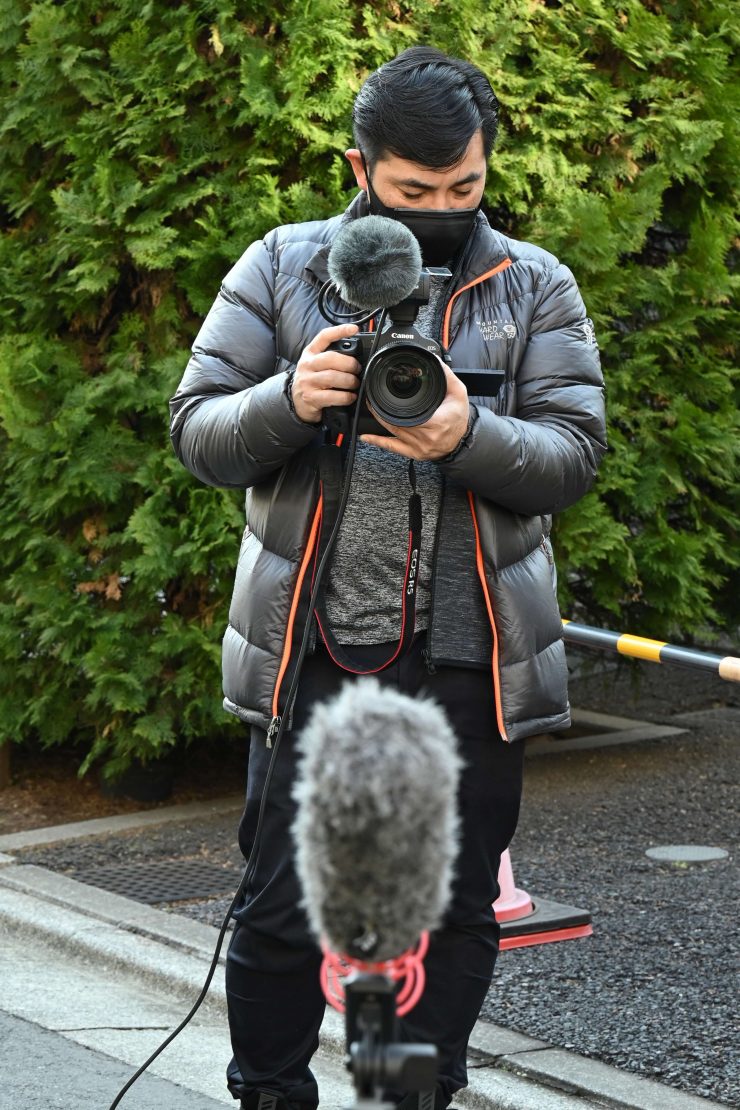
The audio quality is good when using the CA-XLR2d-C with a Canon camera that has a multi-function shoe.
Above you can listen to a test using the CA-XLR2d-C and the Sanken CS-1e. Audio is getting passed directly through the Canon multi-function shoe. The quality of the audio is largely going to depend on the microphone you are using.
Are there any issues when recording audio using the CA-XLR2d-C & a Canon camera that has the Multi-Function shoe?
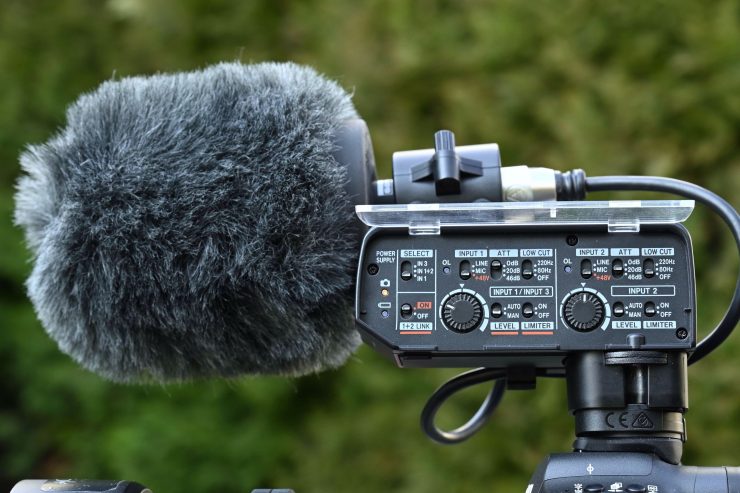
There is a couple of things you need to be very aware of when using the CA-XLR2d-C with the Canon R3 or R5 C.
Both the R3 and the R5 C have limitations when it comes to the power capacity they provide to CA-XLR2d-C. The maximum power output they can provide is 9mA so if you are using mic(s) with a powerful current, you need to use the included battery box to power the mic even when the unit is digitally connected with the camera.
This comes back to the way Canon has designed the R3 and R5 C. The cameras are already using up a lot of the available power they can provide from their batteries and what can be sent to the multi-interface shoe is limited.
To me, one of the main benefits of using the CA-XLR2d-C with a Canon camera that has a multi-interface shoe is that it shouldn’t need to be powered by an additional battery source. To be crystal clear, this isn’t Tascam’s fault, they can only work within the limitations of what Canon gives them. The R3 and R5 C clearly aren’t capable of providing enough power to run the CA-XLR2d-C when phantom power is being used with certain microphones and that is why you need to use additional batteries.
Sony and Panasonic don’t have these limitations with their XLR adapter boxes that connect via the hot shoe.
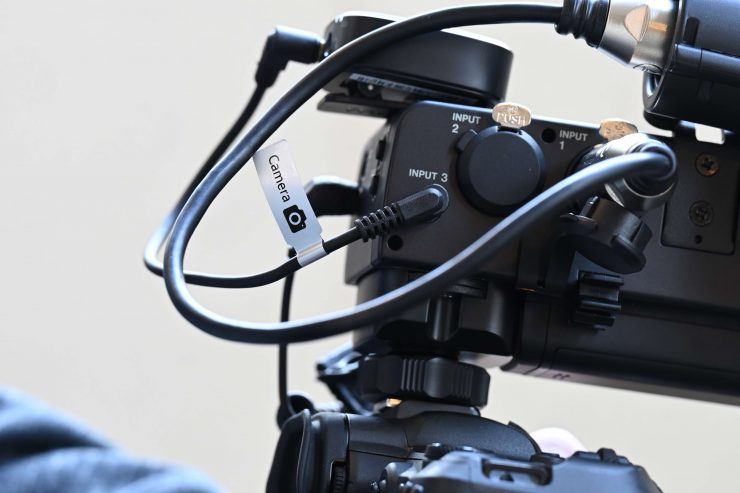
The other thing to be aware of is that you can’t simultaneously use Channel 3 with Channel 1 or Channel 2. You also can’t use Channel 1 or Channel 2 with Channel 3. This is a potential issue with the R3 if, for example, you were running a shotgun microphone into Channel 1 through the XLR but you also wanted to run an affordable wireless system into the EXT Channel 3 input.
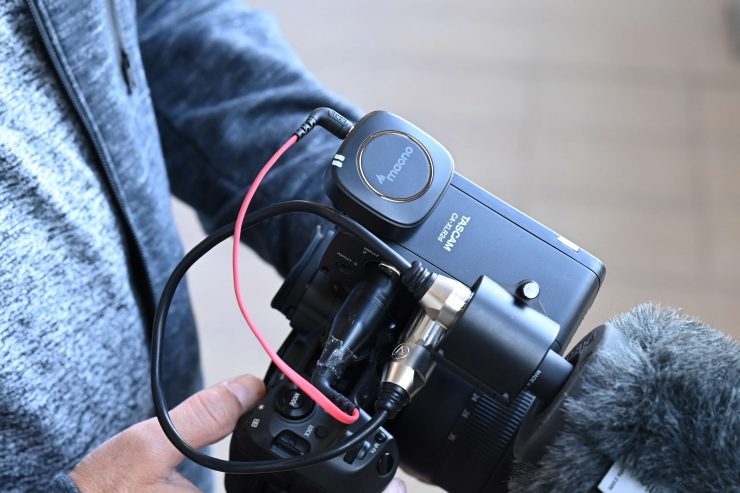
What you would need to do to overcome this limitation is use a 3.5mm to XLR converter and run your wireless and your shotgun into the XLR inputs. The issue with this is that if you were using a dual-channel wireless RX with a 3.5mm stereo output you can’t send two channels into a single XLR.
Just to be crystal clear, with the R5 C you could still use the CA-XLR2d-C and the camera’s own 3.5mm input. This is something you can’t do with the R3.
I can’t speak for the R5 C, but when I tried using the CA-XLR2d-C with the Canon R3 and a phantom-powered microphone I did encounter some caveats. If you turn your camera on and then hit record straight away the audio signal coming through the multi-function shoe from the CA-XLR2d-C didn’t start sending audio for the first 5 seconds and 16 frames of the recording.
Above you can see the actual recorded clip from the R3.
There is also a long input delay if the camera is already on and you access a menu and then go back to the main screen and hit record. The delay seems to be because the camera has to send power to the CA-XLR2d-C and it then needs to route that power to the XLR input/inputs where phantom power is activated. Even still, this almost 6-second delay from the time you hit record after first turning the camera on until you start getting audio is a real issue.
If the camera is already on and you then hit record you don’t get any delay.
When I tried using one of the XLR inputs with the phantom power turned off you don’t get nearly as much delay before the audio signal comes through. I found the input delay to be around 1 second and 20 frames.
Above you can see the actual recorded clip from the R3.
If I used the EXT 3.5mm input on the CA-XLR2d-C there was also a slight input delay of 1 second and 20 frames when turning the camera on and pressing record, or going into a menu and then coming back and pressing record.
Above you can see the actual recorded clip from the R3.
These issues may not be of any concern to you if you don’t need to turn the camera on quickly and hit record straight away, or come out of a menu and hit record quickly. Nonetheless, you should be aware of these caveats.
I wasn’t sure if these are issues with the R3 or an issue with the multi-function shoe, or the CA-XLR2d-C itself. There is no delay if you use the 3.5mm output on the CA-XLR2d-C instead of the multi-function shoe. I reached out to Tascam to get an explanation and this is what they told me:
‘The delay is actually on purpose due to the electric current limitation on R3 (and R5C too). Having the phantom on can cause a steep change in current and the camera would stop powering CA-XLR2d unit.
The CA-XLR2d has to power up each of the internal parts sequentially and that is taking around 4 to 5 seconds. As you mentioned, no phantom power means one less big power gate for the sequence so it gets shortened to nearly 1 second.
This sequential powering is also required when the shooting mode is changed.
Tasacam
Most of these issues with the CA-XLR2d come back to limitations that the Canon R5 C and R3 have. These cameras just don’t have enough power to drive some of the additional third-party accessories correctly. You can’t blame Tascam for these powering issues because they can only work within the confines of what the R5 C and R3 can do.
How do you use it with another camera that doesn’t have the Canon multi-function shoe?
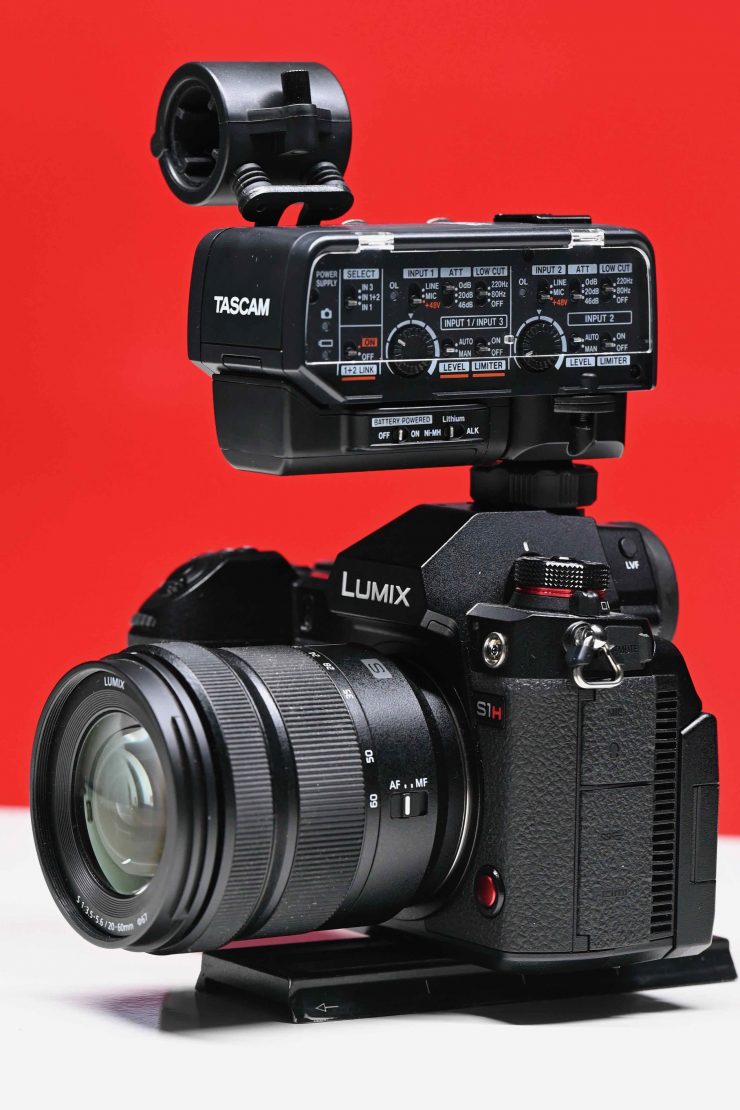
What I like about the CA-XLR2d-C is that Tascam has designed it so you can use it with a wide variety of cameras, it isn’t just limited to being used on a select few Canon cameras. You can remove the multi-function shoe adapter and then replace it with the included CA-AK1-AN Cold Shoe Mount Adapter.
Undoubtedly if Canon had have designed and manufactured this product themselves then it would have only been compatible with their cameras. Both Sony and Panasonic’s XLR adapter modules only work with their respective cameras.
The first thing you need to do is to remove the multi-function shoe adapter and replace it with the included CA-AK1-AN Cold Shoe Mount Adapter.
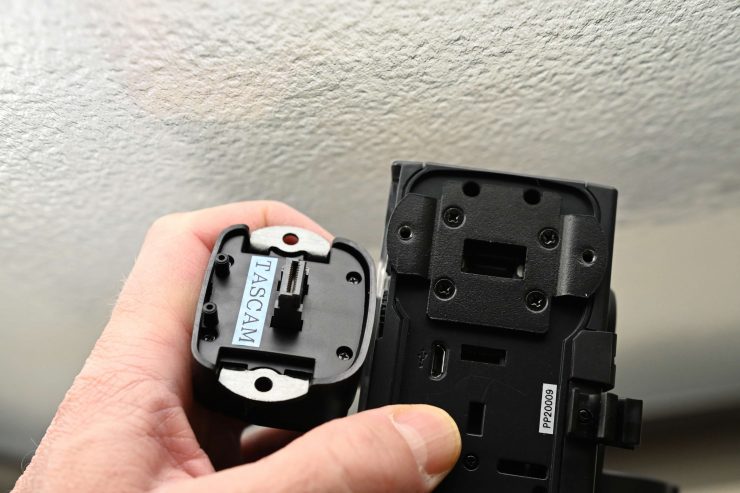
This requires you to undo two small screws with a screwdriver and then remove the multi-function shoe interface. You then replace this with the CA-AK1-AN Cold Shoe Mount Adapter
The next step is to attach the battery sled to the bottom of the CA-XLR2d-C. This is as simple as removing a cover and then pushing in the battery sled.
The battery sled takes two AA batteries and sits directly underneath the CA-XLR2d-C.
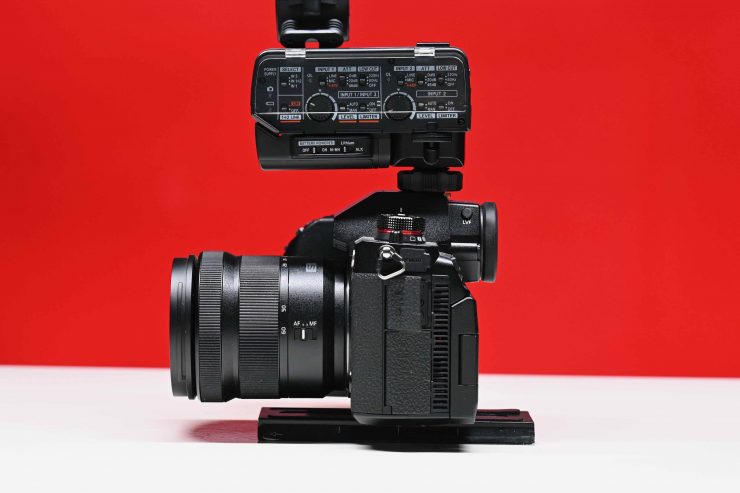
The battery sled fits like a glove and it doesn’t move around or wobble in any way.
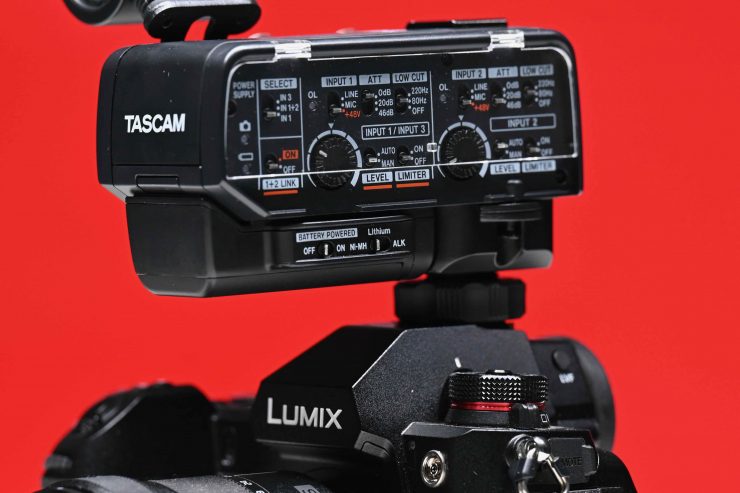
The battery sled has two switches on it. The first is a battery power On/Off switch and the second one allows you to select what type of batteries you are using.
If you use the CA-XLR2d-C with any camera that doesn’t have the Canon Multi-function shoe you also can’t simultaneously use Channel 3 with Channel 1 or Channel 2. This is an issue if you wanted to run a shotgun microphone into Channel 1 through the XLR but you also wanted to run an affordable wireless system into the EXT Channel 3 input. You can’t do both at the same time.
What can the CA-XLR2d-C output over the 3.5mm out & what is the audio quality like?
The 3.5mm output on the CA-XLR2d-C is capable of sending a stereo signal. If you are using a stereo mic or a dual wireless microphone RX you can then independently record two different channels on your camera.
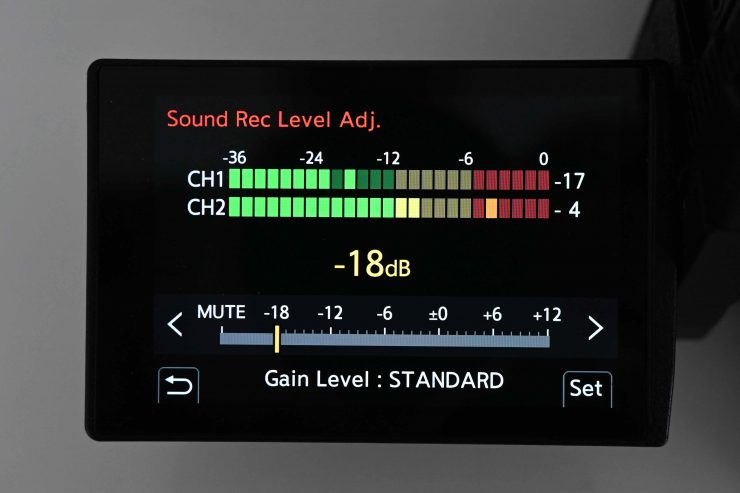
It is best to set your camera’s input level as low as possible and then adjust the input levels on the CA-XLR2d-C to get the correct recording levels.
So what is the audio quality like when using the 3.5mm output? Well, this is going to depend on a variety of different parameters such as the microphones you are using and the camera.
Above you can listen to a test I did with a Sanken CS-M1 going into the CA-XLR2d-C and that signal is fed via the 3.5mm output to a Panasonic S1H.
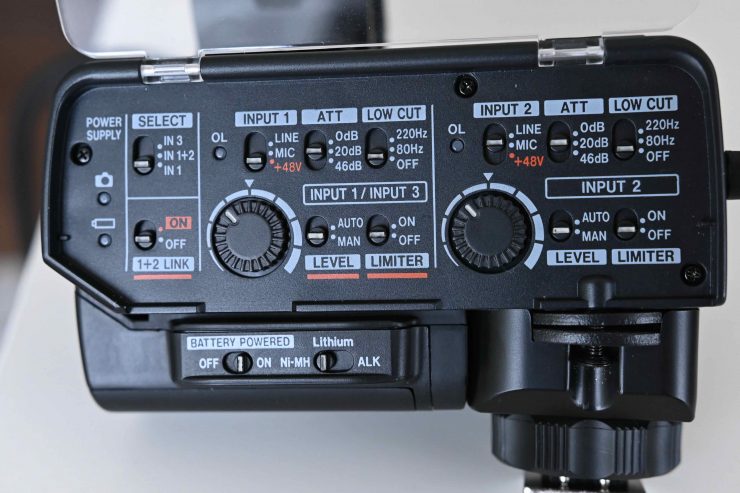
Above you can see the settings I was using on the CA-XLR2d-C for that test. The attenuation was set at 20db and both the limiter and low cut were set to off. This was recorded in a normal room and there is a heater on in the background.
Price & Availability
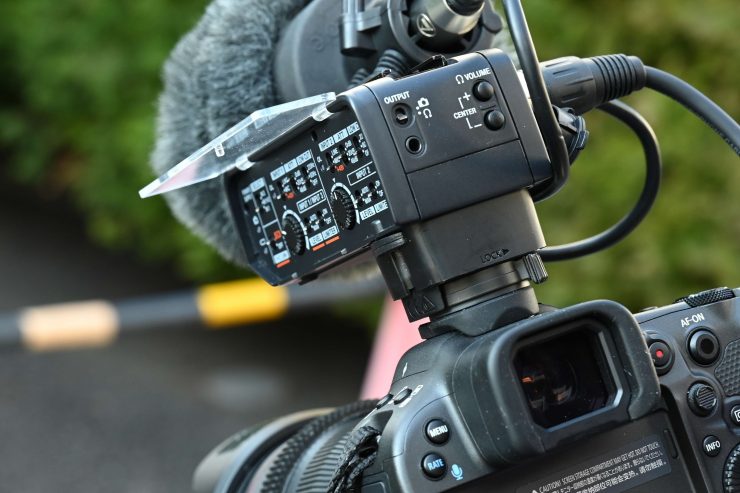
The CA-XLR2d-C retails for $499 USD and it was scheduled to start shipping on the 29th of January. On B&H it is now showing the shipping date as mid-March.
When I reached out to Tascam to ask them about shipping dates they told me that the shipping date varies between kit variations. The Canon kit will be the first and shipping to customers is about to start. The Fujifilm kit and Analog kit will be shipping around March.
Tascam like most companies has had to adjust production several times due to the general supply chain difficulties.
How does this price compare to Sony and Panasonic’s solutions? Below you can see:
| PRICE | |
| Tascam CA-XLR2d-C | $499 USD |
| Sony XLR-K3M Dual-Channel Digital XLR Audio Adapter Kit with Shotgun Microphone | $598 USD |
| Panasonic DMW-XLR1 XLR Microphone Adapter | $397.99 USD |
What do you get with the CA-XLR2d-C ?
In the kit you get the following:
- Tascam CA-XLR2d-C XLR Microphone Adapter Kit for Canon Cameras
- CA-AK1-C Canon Multi-Accessory Shoe Mount Adapter (Attached to Unit)
- CA-AK1-AN Cold Shoe Mount Adapter
- Mic Holder (Attached to Unit)
- Battery Holder (with Connector Cover)
- 3.5mm Stereo Mini Cable
- Limited 1-Year Warranty for Parts, Limited 90-Day Warranty for Labor
Full Specifications
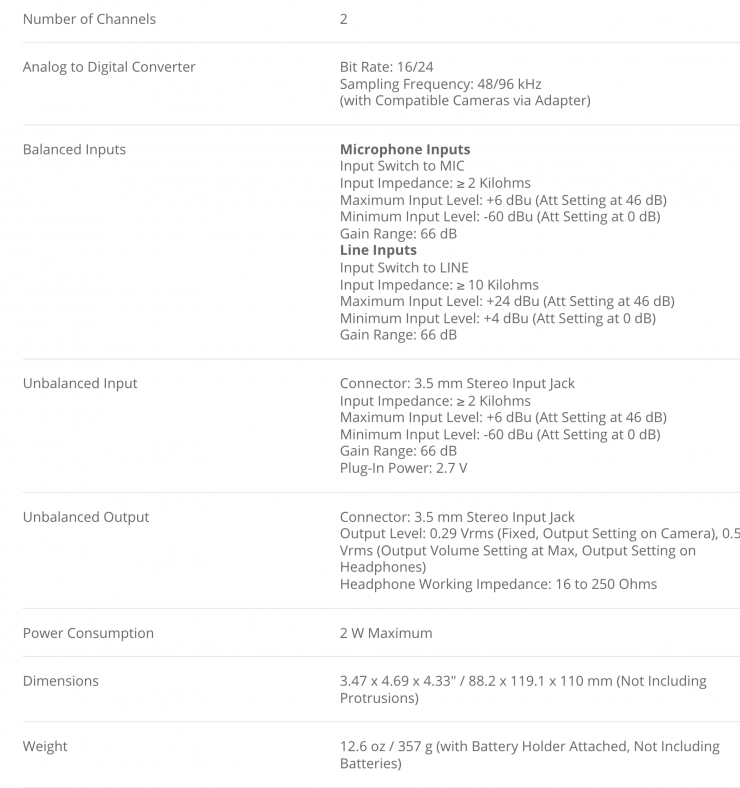
Conclusion
The Tascam CA-XLR2d-C is a well-made and versatile audio solution for cameras that don’t have good onboard audio capabilities and inputs.
It is a good solution for the Canon EOS R3 and the R5 C, however, it does have a few caveats that you need to be very aware of. Having the ability to input multiple line, mic, or +48V phantom power sources makes the Tascam almost an essential item for working with the R3 or R5 in professional environments. The biggest issue is the input delay when using the XLR inputs with phantom power when you are turning the camera on and hitting record and when you are coming out of a menu and pressing record. This is an issue with both the R5 C and the R3.
I like how Tascam hasn’t just made a product that can only be used on a select few Canon cameras. By including a cold shoe interface the CA-XLR2d-C can be used on a wide variety of cameras and it allows the end-user to swap it between various cameras, regardless of brand.
The CA-XLR2d-C is quite large and heavy compared to the solutions that Sony and Panasonic make, however, it is far more versatile.

